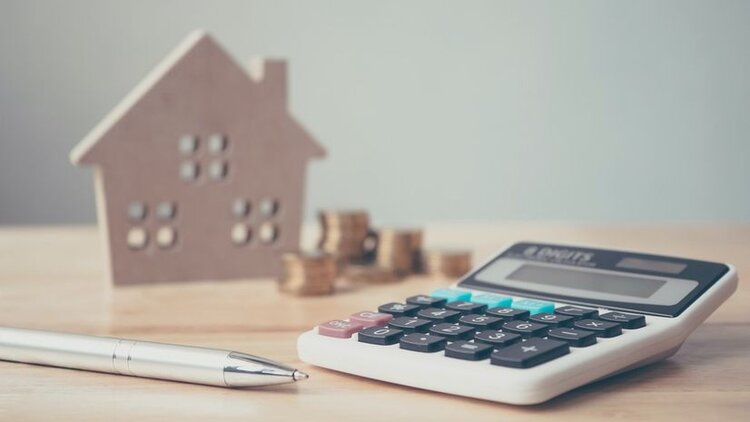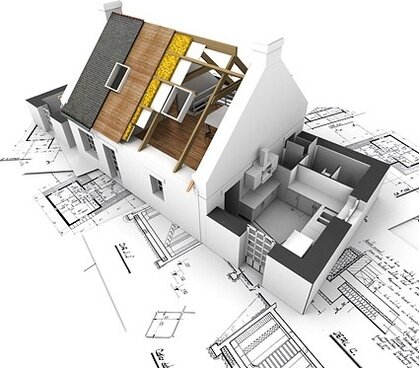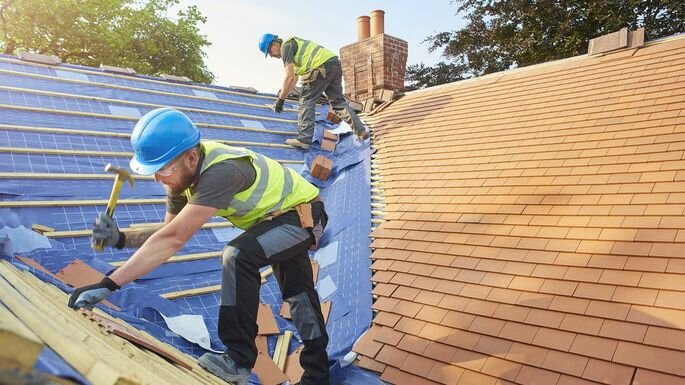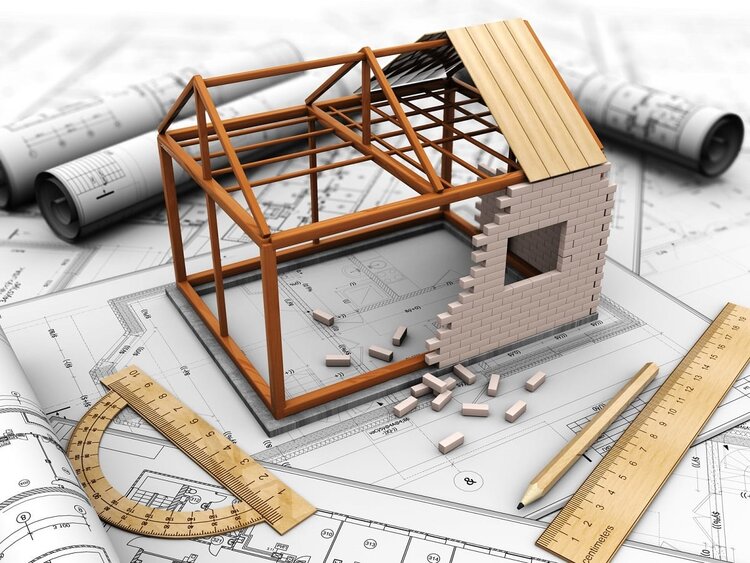If you can’t find your dream home on the market or if you want to create a home that’s uniquely yours, you might consider building a house. Buyers who decided to build new homes were more likely to say that selecting the floor plan, having everything in the home be brand-new and customizing their home features were among their top reasons.* Before deciding if new construction is for you, you’ll want to learn about the different types of new-home construction and familiarize yourself with the process, from the initial land search all the way to selecting finishing touches.
Typically, when someone says they’re planning to build their own home, they are referring to a fully custom build where they have a say in almost everything (short of items restricted by local laws and zoning regulations). But, in the realm of new construction, there are three different approaches buyers can take:
Spec homes. With a spec home (short for speculative home), a home builder designs and constructs a single-family home without having one individual buyer in mind. Instead, they plan on selling the house to a buyer once it’s finished. Depending on how early in the process you are able to go under contract, you may be able to select some of the home’s final touches, like flooring, kitchen appliances and paint color. Sometimes these homes are listed for sale as “pre-construction.”
Tract homes. With a tract home, a developer purchases a parcel of land and divides it into individual lots. Then, a home builder constructs all of the homes in that planned community. Tract homes can be condominiums, townhomes or single-family homes. Most homes in the community will look similar, and shared amenities are common. Similar to spec homes, you may be able to select some finishes in advance, depending on the timeline.
Fully custom homes. With a fully custom home, you typically find the land on your own then hire a builder to build your dream home. You have total control over the floor plan, layout and finishes, but the process requires a lot of decision-making, attention to detail and disciplined budgeting — custom homes can be expensive.
Since custom homes are the most complex new construction option out there, we’ll spend most of this article explaining the process.
Check your financing options

Once you’ve decided that building a custom home is the right choice for you, the next step is figuring out how you’ll pay for it — and a traditional 30-year, fixed-rate mortgage isn’t an option for custom home construction, at least not at first.
Unless you can pay for the entire build with cash, you’ll likely be looking for a construction loan, which is also sometimes called a self-build loan or a construction mortgage. Getting a construction loan is often more difficult than getting a traditional mortgage, as you’re borrowing money for a concept and not a physical house. You’ll need to provide your lender with a timetable, budget, floor plans, materials needed and extensive details to be considered. Other things to know about construction loans:
- They have variable rates that are often higher than typical mortgage rates.
- A 20%-25% down payment is usually required.
- The loan can include the land you’re purchasing or it can cover only the construction costs if you already own the land.
- There’s an opportunity to refinance into a traditional fixed-rate mortgage once construction is complete.
Locate the right lot

If you don’t already own the land you plan to build on, you’ll need to shop around for the right lot. A real estate agent can help you identify lots for sale in your area.
As you narrow down lots you like, you’ll want to loop in your architect and builder to make sure the lot you select fits the needs of your home’s floor plan and design. They should be able to help you check zoning laws and restrictions and identify any attributes of the lot that might make it more expensive to build on — for example, a steeply graded lot may require more engineering, or a lot in a remote area may necessitate a septic tank.
Plan and design the home

Figuring out the size, layout and style of your home is a big task, and it can happen before or after the lot is selected, depending on your individual plans. When you’re building a custom home, the sky’s the limit, although you will need to keep in mind your budget and any limitations of your lot. And, if you don’t plan on living in the home forever, consider how design decisions will affect the home’s future resale value.
The professionals on your team will be able to help you home in on the right style and layout, but it doesn’t hurt to get a feel for what you might want in advance. Drive around your area and identify homes you like. Look for interior design inspiration online or research the latest smart home features to see if you think they’re worth the added cost.
Here are a few important design decisions that need to be made early on:
Number of bedrooms and bathrooms. How many people will be living in the house? Is your family growing, or are you downsizing? What about houseguests?
Single story vs. two story or more. Are there mobility issues that should be accommodated? Would a one-story home be easier for those with limited mobility living there?
Outdoor space. How important is outdoor space and how much should you have? The bigger the yard, the more maintenance involved.
Open concept or individual rooms. How open you want your house to be depends on your taste and lifestyle. Individual rooms give a more classic feel, while open concept homes are more modern.
Home style. What aesthetic do you want your house’s exterior to have? Tudor, Cape Cod, craftsman, colonial?
Interior design. Are you partial to modern design, a more traditional look or something in between? If you plan on using the same furnishings you have now, will they match the look of the new home?
Additional features. Think through other features that need to be decided on early in the process, like smart home compatibility, eco-friendly materials or solar panels.
Future resale value. If you think you’ll sell the home at some point in the future, consider the home’s possible resale value. For example, if you add a pool or an upscale kitchen, will your home be priced too high for the neighborhood?
Hire professionals

Building a home isn’t an easy task, and it’s rare to take on the entire project yourself. So, you’ll need to have several different professionals by your side to ensure your home is structurally sound, follows local code and suits your needs.
Home builder
Hiring the right builder can make or break your custom home experience. Choose someone who is not only a licensed general contractor but also has a portfolio of custom homes and success stories in recent years.
To find your builder, you can ask for a referral from friends and family, search online, or ask your real estate agent for recommendations. A good builder will help with:
- Budget
- Zoning laws, including acquiring permits
- Infrastructure needs, like utilities and sewe
Architect
In most places, in order to even apply for permits, you’ll need architectural plans. Discuss the following details with your architect before they create your blueprints:
- Square footage
- Stories
- Number of bedrooms and bathrooms
- Layout
- Functionality
Interior designer
You may also want to hire an interior designer who can help with the finishes once the framing and structural elements are in place. From flooring to bath tiles to fixtures, there are many design choices that need to be made, and it can get overwhelming for the average home buyer. If you do plan on making all the interior design choices on your own, don’t wait until installation time. Start researching finishes and fixtures early so you can set your budget.
Other professionals
In addition to these key players, there are other professionals involved in the custom-home-building process. Many of these people are hired by your home builder or general contractor:
- Land clearing crew
- Surveyor
- Structural engineer
- Inspector (from the city)
- Plumbers
- Electricians
Understand the process of building a house

After the designs and blueprints have been finalized and your permits have been approved, that’s when construction starts and your home begins to take shape, generally following these steps:
- Land prep
- Footings and foundation
Your foundation will be made of poured concrete reinforced with steel rods. Depending on the part of the country you’re building in and the design of your home, you may have a slab foundation, crawl space or a full basement. No matter what kind of foundation is poured, it will be sprayed with a waterproofing material and inspected by the city before framing begins. - Framing
In the framing step, the bones of the home start to take shape. Framing includes the floor joists, subfloors, studs that form the walls and roof trusses. During this step, the crew will wrap the house to protect it from moisture. If construction is taking place during a rainy time of year, your builder may also install windows, roof shingles and siding during this step. - Plumbing, electrical and HVAC
Once the home is “dried in,” subcontractors will start installing the home’s major systems, including plumbing pipes, electrical wiring and heating and cooling ducts. Each of these steps requires signoff from a local inspector. - Insulation
Your home’s insulation needs will vary by climate, but in general, insulation will be applied to exterior walls, basements, crawl spaces and attics. Fiberglass, cellulose and foam insulation are all options. - Drywall
Drywall panels are hung with screws, taped and mudded, and a spray texture is applied. Then the new walls are primed with paint. - Interior finishes
In this step, most of the home’s interior features will be added. This includes doors, baseboards, casings, window sills, stair balusters, kitchen counters and cabinets, bathtubs, vanities, and hard-surfaced flooring. Interior painting and hardwood installation are sometimes done during this step, but they may be done later if there is risk of damage due to continuing construction. - Exterior finishes
Driveways, walkways, patios and final grading to direct water away from home will all be completed. Landscaping and exterior decorating happen during this step too. - Fixture installation
With the house close to completion, toilets, faucets, light switches, heat register covers, the hot water heater, the electrical panel and the HVAC systems are all installed. Many of these items require another round of inspection. Another task that happens in this step is the installation of glass fixtures like mirrors and shower doors. - Flooring installation
Carpet and hardwood flooring are added in this late stage. Make sure to check with your builder on the status of your hardwood finishing process so you don’t accidentally damage them. - Final inspection
Once construction is complete, a final inspection will be conducted by a local building official. Upon passing, you’ll receive a certificate of occupancy, which gives you the green light to move in. - Final walkthrough
Before you move in, you’ll want to do a final walkthrough with your builder to identify punch list items that need to be repaired for the job to be considered complete. Common punch list items include electrical defects like nonfunctioning outlets, damage to drywall and paint, or missing fixtures.
The first step in the construction process is getting the land ready. This includes clearing the area, digging trenches and making sure utilities are installed.
